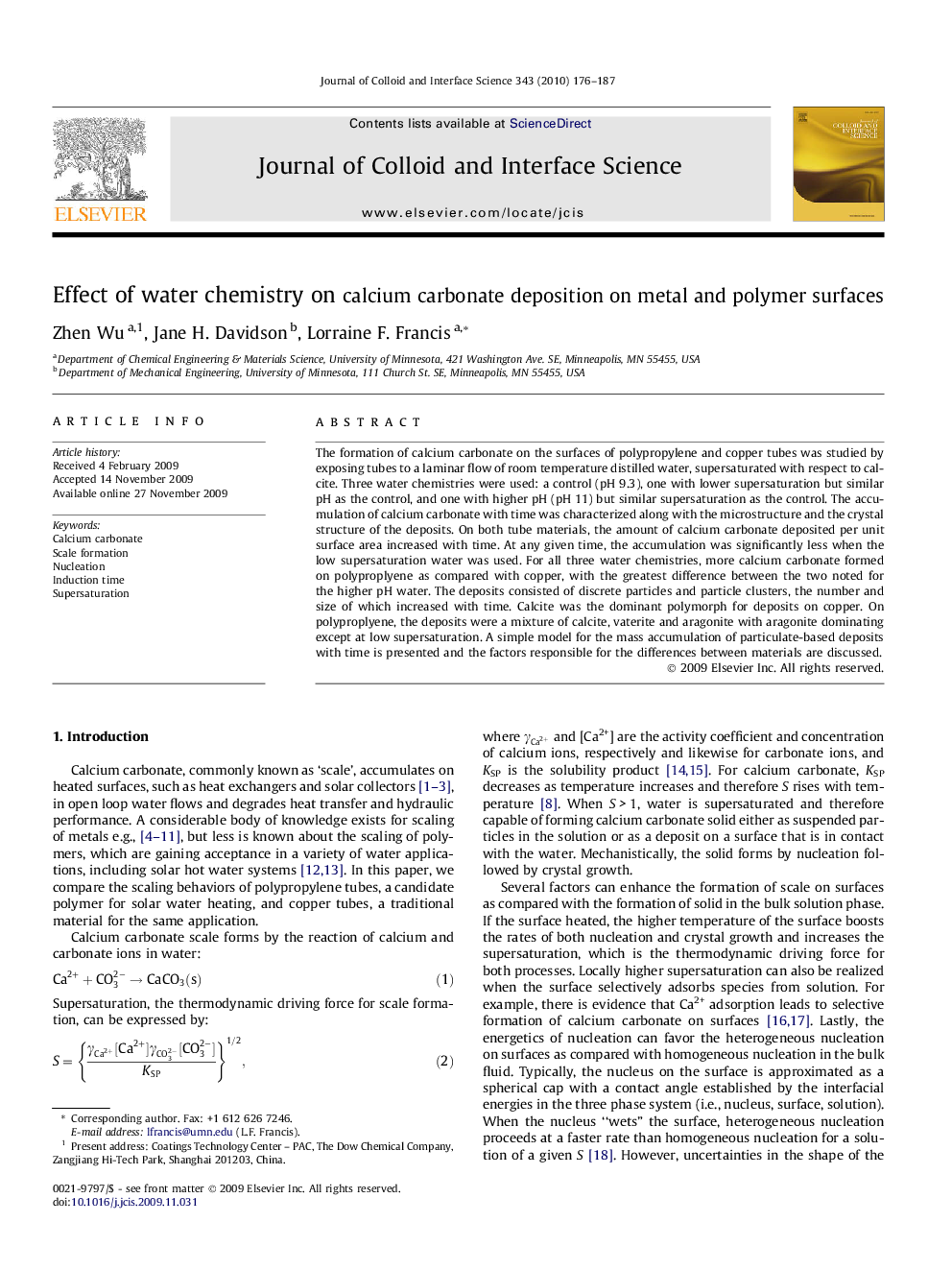| Article ID | Journal | Published Year | Pages | File Type |
|---|---|---|---|---|
| 609425 | Journal of Colloid and Interface Science | 2010 | 12 Pages |
The formation of calcium carbonate on the surfaces of polypropylene and copper tubes was studied by exposing tubes to a laminar flow of room temperature distilled water, supersaturated with respect to calcite. Three water chemistries were used: a control (pH 9.3), one with lower supersaturation but similar pH as the control, and one with higher pH (pH 11) but similar supersaturation as the control. The accumulation of calcium carbonate with time was characterized along with the microstructure and the crystal structure of the deposits. On both tube materials, the amount of calcium carbonate deposited per unit surface area increased with time. At any given time, the accumulation was significantly less when the low supersaturation water was used. For all three water chemistries, more calcium carbonate formed on polyproplyene as compared with copper, with the greatest difference between the two noted for the higher pH water. The deposits consisted of discrete particles and particle clusters, the number and size of which increased with time. Calcite was the dominant polymorph for deposits on copper. On polyproplyene, the deposits were a mixture of calcite, vaterite and aragonite with aragonite dominating except at low supersaturation. A simple model for the mass accumulation of particulate-based deposits with time is presented and the factors responsible for the differences between materials are discussed.
Graphical abstractFigure optionsDownload full-size imageDownload high-quality image (68 K)Download as PowerPoint slide
